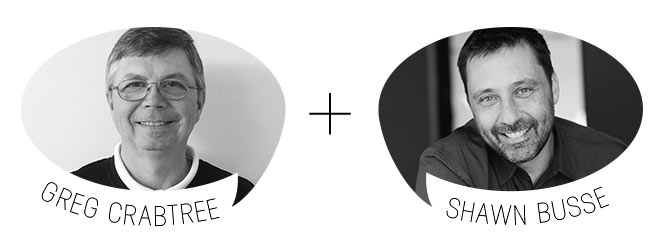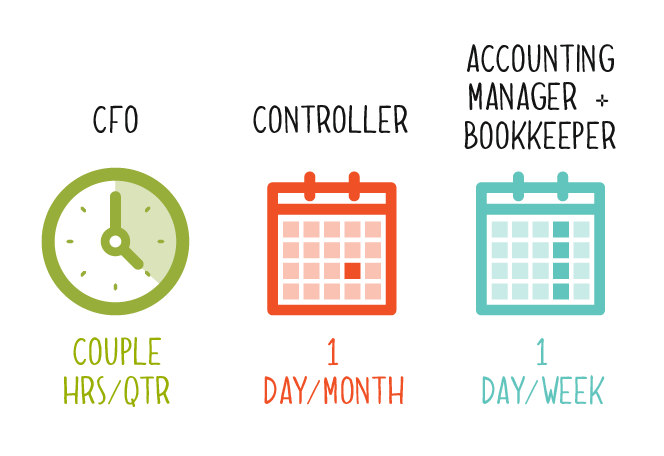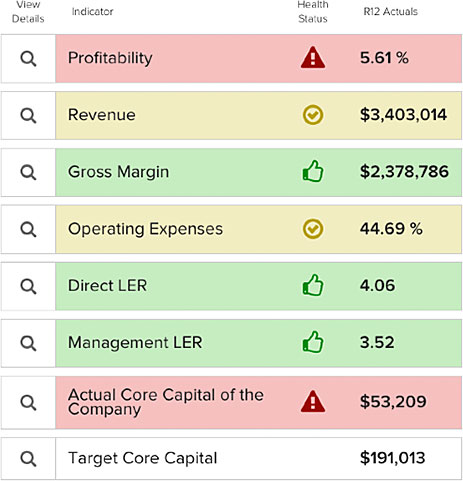
Meet Fluffy, Your 800-Pound Gorilla
Having a large customer the size of an 800-pound gorilla drives rapid revenue growth, but it also carries hidden dangers for your business.
Learn how to tame it.

Our Accelerator Interview series, “Thinking Big” is our way of sharing insights from successful business leaders within the Kinesis community.
Kinesis works with many small businesses, all of whom face a common set of challenges. One of the most prominent? Maximizing the value of the company. Unfortunately, all business owners struggle to get mental clarity around what is a good value and how to improve it.
This week on “Thinking Big,” we sit down with Greg Crabtree – speaker, author, entrepreneur, and financial expert. His innovative CPA firm is dedicated to helping entrepreneurs build the economic engine of their business.

Shawn: Hi Greg. Thanks again for sharing your insights and experience with the Kinesis Accelerator readers. Tell our readers about your practice and the problem you solve for your clients…
Greg: Our practice is focused on entrepreneurs, with businesses that are privately held. We help them run a profitable wealth-building business, then help them make strategic decisions about the reinvestment and purposeful use of those profits to achieve their long-term goals.
That means first helping them run a successful business, then managing the tax implications of that, and then supporting them with traditional accounting services of tax preparation, financial statement preparation as needed, or outsourced bookkeeping services.
That way, the resources of the traditional CPA firm are focused purely on the same mission of helping that client achieve their objective (rather than just performing disconnected compliance tasks). Our “WHY” is to elevate the entrepreneur.
Shawn: That’s a great summary. Tell me a little bit more about your firm, and how you’ve structured it in a fundamentally different way than most CPA practices.
Greg: As you grow as a business, there are certain key functions which you don’t need full-time. So you have to either buy a full-time person and find another way to make good use of their time, or you fill the role on a fractional basis.

If you’re a $5 million or less business you need a CFO a couple hours a quarter, you need a controller one day a month, you need an accounting manager and a bookkeeper one day a week. The problem is those are four different distinct skill sets. Clients are never going to be successful finding and hiring that person themselves. But if they can do so on a fractional basis, we can help fill whatever gap they have.
That said, we don’t sell CFO consulting services in hourly increments – I think that’s one of the flaws of the industry. Most outsourced CFOs are trying to sell a base amount of hours (because they want about four clients to fill up their month). But the fact is, you don’t need 10 hours a month of a CFO – there is just not enough CFOing to do.
Instead of an hourly rate, we sell a result – it’s a package of, “Here is the process. If you follow this process, we believe it works, and we’ve seen many success stories of that happening to a phenomenal degree.”
Shawn: That mirrors very closely the problem I’ve seen with marketing. Business owners try to hire one marketer, hoping they can do the job of 2, 3 or even 4 people. Since marketing and sales should be the engine of growth, what are some of the other issues you see when it comes to owners building effective sales and marketing programs?
Greg: Really it comes to the dilemma of what I call the entrepreneurial mitosis process. Usually it’s a person who says, “I want to create a business.” Great. You are a single cell amoeba. You do sales, marketing, finance, IT, operations, etc… you are it. You grow to a point, and somewhere about $400,000 to $600,000 in revenue you start to have convulsions of going, “My hair’s on fire. I need help!”
I always talk about the big four functions of executive management in a business: CEO (that’s usually the original founder), marketing, sales, and operations. The first stage of entrepreneurial mitosis is when the founder decides that they have to separate into two cells, and that founder has to choose one path or the other.
Typically, the CEO either goes into sales and marketing primarily or takes the operations path. Most often, CEOs choose to own the sales and marketing function. They may have other support helping them do it, but they are primarily focused on winning new customers.
On the other hand, we’ve seen the operations path to be a significant inhibitor of growth. That’s because the operations-focused founder tends to lean on the easiest sales to pick up. They source their friends and immediate network to fill the pipeline, because it’s comfortable and accessible to them. But once they’ve sold to everybody they know, they get stuck. They’ll often then try to hire out the sales and marketing function, but will struggle to make that work since sales and marketing people are both hard to hire and are good at convincing owners of value that isn’t always there (in other words, they’re good at selling themselves but not necessarily the owner’s products). All of this means that the operations-oriented business tends to grow more slowly and has a lower-lid in terms of growth potential.
That first critical stage of splitting into the two cells is when there are two people in the business: somebody is primarily focused on getting stuff out the door, and somebody is primarily focused on getting the next customer. That’s the critical stage – if you can get past that, you can start adding other cells.

I think to a large degree it comes down to playing your strengths. I see that as a much more executable model if you get the right people in the right roles. For example, in my case I’m passionate about what we do – but I also have low resilience and I don’t like rejection. So I’m focused more on marketing, and we have another position in our office (who can deal with hearing “no”) who handles sales.
Shawn: What other common pitfalls come to mind as it pertains to small businesses tackling marketing challenges?
Greg: Another mistake clients make is they see that they have a need for marketing, but don’t know what level to hire. So, you typically gravitate toward hiring somebody who is more experienced – who can work on the strategic components of marketing. But it turns out that strategy is 10% of their time – and then they spend another 10% of their time at a middle level of marketing engagement, and the majority of their time is spent on the more administrative things.
You are paying for a skillset that’s only being utilized 10% of the time. That’s when you want to look to say, “How do I outsource this function to get the most effective person doing the right thing at the right rate?”
Shawn: And what of your own marketing efforts? As an entrepreneur yourself, what advice or lessons learned can you share with our readers?
Greg: My classic complaint is what we call a “business developer.” What that really is is a buzzword that means, “I’ve taken the sales and marketing function, shoved it into one human, and made that person the most inefficient developer of business known to mankind.” It’s costly, because that person walks around and says “Hi, my name is Greg. I do accounting. Do you need accounting?” and that’s just so inefficient. I do accept the fact that some business models do require human contact, but it’s a flawed way of thinking about it.
What surprises most people is when we tell them 80% of what we do is not in Huntsville, Alabama (where our office is). And they go “how did you do that?”
Well, it started with developing something that we actually believe in. They don’t teach us to believe things in accounting school – they just teach you to process things. But we actually believe in the things that we promote to clients as ideals of how to run a successful business. And then we just constantly kept talking about it and putting the content out there.
Content marketing does not provide immediate benefit overnight. It comes with doing speeches, writing articles, writing a book. Then it takes more speeches and more articles and putting out videos. There wasn’t a singular tipping point of “Aha, now everybody knows about us.” It’s a slow build, like smoking a brisket. It takes a long time and you just have to stay at it, stay at it, stay at it.
But at the end of the day, it really does get down to what Simon Sinek talks about – the, “WHY.” If you don’t know your WHY then you’re not going to be authentic, and people see that. If you are the last person that communicated with someone and they have a need for what you do, yes, that random connection will sometimes work. But we get people who have thought about working with us for years and then finally they pick up the phone or email us and contact us. So it has not been this random “last marketing tactic” because we’ve established a reputation of being unique in what we do and how we do it.
Shawn: Ok, I’m going to pivot things a bit here. When I first heard you speak at an event nearly 8 years ago, you presented this idea that entrepreneurs like to tell “stories” to themselves; like that they have a successful business even though – when you scratch the surface – it’s a very different picture. Since you’ve seen literally thousands of P&Ls, what are some of the most common myths that business owners convince themselves of?
Greg: The big one is that the entrepreneur creates a distortion around their own compensation. They are not taking a correct wage. By taking the money out of the business through distributions, they are trying to soothe their ego about being at some mythical profit level… when the reality is they are at a loss or break even at best.

A sample dashboard from Greg's Simple Numbers tool
As far as taxes go, I think a big part of it comes down to giving entrepreneurs permission to be honest about true profitability. Telling them it’s okay to be profitable and pay tax. Nobody likes to pay tax, but at the end of the day if you didn’t pay any taxes you either cheated or you didn’t make any money – and both of those are bad. So just accept that this is the condition and go be more profitable.
Shawn: You’ve spoken about how a small business, run well, outperforms many other forms of investing. Help our readers understand what you mean when you talk about the ROI on capital, and what that should look like in a healthy business.
Greg: I started off helping companies fix profitability. Since then the conversation has evolved – I now know that the ultimate goal is a return on invested capital. That means that based on the capital input that you put into your business, you have to have a minimum rate of return.
In other words, let’s say you’re a $1mm business. 15% net income would give you $150k in profit at the end of the year. After taxes, let’s round that number to an even $100k.
Now as the business owner, you have choices on what to do with that profit. Some might be tempted to take it out of the business and invest elsewhere (stock market, real estate, etc.). Depending on how aggressive / risky these investments are, you’d likely be looking at a potential annual return of anywhere from 1-10%.
What I’m suggesting instead is that you reinvest this capital back into the company and put it to work. Hire a new employee, purchase new equipment, or broaden your marketing efforts. Doing so will increase your capacity – which means that same $1mm business could now be a $1.5mm business. That $500k in top-line growth would yield an additional $75k in net income, or $50k after taxes.
By investing that initial $100k and yielding $75k, that’s a 75% return on invested capital – and a much better performance than any other type of investing. It surprises a lot of people, but what we’ve found is that if you hit your minimum 10% profitability on a typical business, you’ll never have less than a 50% return on invested capital.
The tricky part is knowing how to invest within your organization. For example, if you’ve maximized your market share, spending more money on marketing might not be a good idea. In other cases, making an investment could lead to other complications – like needing a larger facility or having to grow other areas of the business. Each business’s needs will be different – but the return on invested capital at least gives you a metric to track against, to know if you’re deploying money in the right way.
Shawn: Ok, last question. If you could wave your magic wand and change one thing about how business owners think about their business, what would that be?
Greg: I think the ultimate question for the entrepreneur is, “Is this business operating in an optimal way?” If not, is my ability to operate what’s keeping it from achieving its goal? Or is it that the marketplace is now turning sour against this business model and I need to think of some other innovative way of delivering that product or service?
To learn more about Greg and his unique approach to accounting services, check out his book: Simple Numbers, Straight Talk, Big Profits!
Get insights like this straight to your inbox.